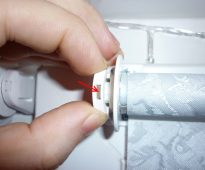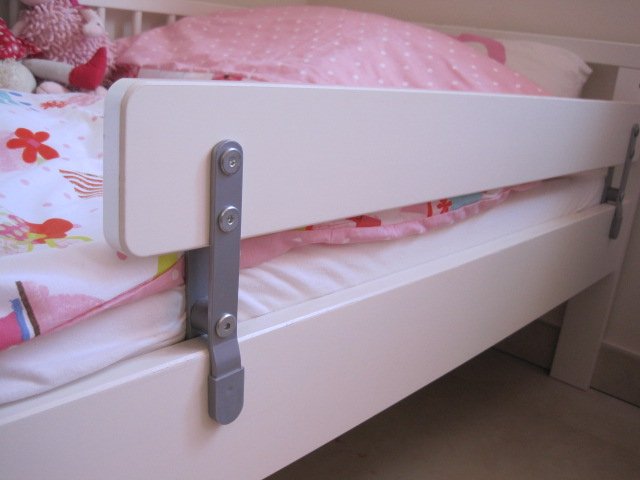 Eaves for curtains wall: three-row, two-row, design
Eaves for curtains wall: three-row, two-row, design
How to whiten tulle curtains at home
White curtains - a sure sign of good taste. They are easily combined with any interior, without distracting attention from designer accents, make the room brighter and more spacious. But such a number of advantages could not do without the drawbacks, the main of which is the rather rapid loss of pristine whiteness. And if, in the case of using natural fabrics, the solution of the question can be trusted to industrial bleach, then spectacular nylon and organza require a special approach.
Light, transparent curtains on the window can revive and decorate any interior.
Content
Where does whiteness disappear
The main enemies of any material in the zone of the window opening - dust and sunlight. The first entails the formation of a gray semitone, which is formed on the upper, adjacent to the eaves, edge of the product. And ultraviolet paints the areas of the curtain that are exposed to it in an unpleasant yellow color.
As a rule, tulle is selected in white.
Synthetic fabrics compare favorably with natural ones in that they can successfully withstand the sun and street dust for many years. Also, the curtains of them are quite easy to reanimate after a single non-grave violation of the rules of care for the material. But in such a situation one should not expect the return of the original color, therefore it is better to immediately get acquainted with the principles of proper washing of nylon or organza, and follow them from the moment of the first hanging of the cloths on the window.
Over time, the white fabric will turn gray, from washing it can acquire a yellowish tint.
Features of bleaching synthetic fabrics
The basic rule of a good wash is to shake the curtains thoroughly before starting it. If this is not done, the dirt, instead of being washed off with water, will firmly enter the fibers of the canvas. The systematic violation of such an important condition leads to the fact that instead of the attractive purity of color, the curtains are covered with a veil of shades of gray.
Tulle in the kitchen can ruin the annoying stains.
The second immutable law of care for synthetics - no high temperatures. Only cold (up to 30 degrees) water will not lead to fiber deformation. The result: unsightly waves and creases, which are difficult to completely get rid of.
Returning the curtains to their original whiteness during normal washing will not work, whitening is required.
The third and most important rule is no chemistry, as you can only whiten the curtains once. The repeated use of industrial means inevitably leads to the appearance of a persistent yellow hue, which is almost impossible to get rid of.
It is important to select such methods that do not damage textiles, are optimal in terms of time, are available in terms of technology and cost.
Caring for curtains of tulle depends on the quality of the material and differs in the choice of the means and technologies used.
Fourth - soft wash. If a machine is used, then regimes that disperse the drum to more than 300 revolutions per minute should be avoided, and the curtain itself must first be carefully folded and packed in a special pouch or regular pillowcase.With a more preferred hand wash, it is forbidden to rub the material. Only light compressive movements are allowed.
For homemade whitening tulle everything you need can be found in the first-aid kit and the kitchen cupboard.
Old folk methods work softer than modern household chemicals.
Fifth - to press in a typewriter or unscrew manually synthetics can not. After the final rinse, the curtains can simply be put in the basin for a few minutes. During this time, most of the water will drain from them and the curtains can be safely hung without any splashes.
Regular powder, laundry soap and warm water work well for fine fabrics.
And finally - to iron such fabrics is undesirable, but if it is inevitable, then:
- the iron turns on at the lowest power;
- under a curtain and on it the gauze spreads;
- only wet products are ironed.
But these are only general principles of proper washing. As for bleaching, then different types of artificial materials need their own approach.
Some curtains can be washed in a typewriter, for especially fine textiles, only hand washing and rinsing are suitable.
Capron
This lightweight and durable fabric requires pre-soaking in soapy water before washing. It is recommended to use salt, brilliant green or blue for bleaching nylon curtains. The last pair of products requires accuracy at the time of preparation of the rinse solution, because if they are not uniformly dissolved in water, they can form colored spots and stains.
Kapron has a low melting point, so you cannot wash the curtain in hot water.
Salt and the usual detergent, taken in a ratio of 2: 1 (with a reference to the rate of powder consumption) must be diluted in warm water, followed by keeping the curtain in the resulting solution for 4-5 hours.
After a specified period of time, the canvas can simply be rinsed in clean water.
Important! A new nylon will retain the original whiteness much longer if after washing it for 10 minutes to immerse it in saline.
Blue. Only half a teaspoon of the drug, diluted in 5-7 liters of warm water, can create a miracle. At the same time, nothing is needed to soak: first rinse in the mixture, then another in clean water, and then comes the turn of hanging without pressing.
The curtain must be constantly turned over so that the fabric is bleached evenly.
Zelenka is added to the “last” water. To avoid stains, dilute 8–10 drops of the product in a glass, make sure that the mixture is evenly colored (the dissolution process can take up to 5 minutes) and pour this specific bleach into the basin for the last rinse. It curtains soaked for 5-6 minutes. In the process, they require systematic turning over, and when the time runs out, they are simply hung out without prior spinning.
Zelenka is first stirred in a glass of water, only after there is no sediment, the mixture is poured into a prepared wash basin.
Organza
The most common version of this transparent fabric with a characteristic luster, is made of polyester. Due to its properties, organza curtains have been given the respectful name “tulle curtains”. Choosing such an elegant material for decorating windows, it should be understood that the cloth should be washed at least once every six months.
You can not boil, wash in hot water, but the organza absorbs dust and becomes gray from time to time.
And on the cornice the organza is hung out immediately after the water stops flowing from it. Otherwise, there is a risk to get ugly creases, which even the iron cannot completely rid of.
Thin material that requires careful handling.
How to whiten soft curtains of tulle at home? You can use the above recipes with salt and brilliant green or use hydrogen peroxide with ammonia and potassium permanganate.The last pair of products is preferable, because they allow to emphasize the soft radiance of a translucent organza veil.
Regular powder, laundry soap and warm water work well for fine fabrics.
Potassium permanganate in combination with household soap will return the immaculate whiteness to grayed or yellowed curtains if:
- dissolve several grains of the substance in a glass of water to form a saturated pink solution without sediment;
- grate a quarter of the bar of household soap and prepare a solution for soaking from it;
- connect both components and immerse the curtain in it for half an hour;
- wash the curtain in the usual way.
Using manganese for bleaching the main thing - do not overdo it. The solution should be a pale pink color and no sediment.
Ammonia with hydrogen peroxide, taken in a ratio of 1: 2 and spent at the rate of 1 tsp. mixture per liter of water, also perfectly cope with the task of bleaching with a half-hour soaking before washing.
Then rinse thoroughly and can be dried.
What to do with old curtains
The use of one of the above means may be useless if the decorating window curtain is in disrepair. But this is not a reason to abandon attempts to reanimate it.
All you need to save your favorite curtains - patience, starch and vinegar.
Starch available in every home can only be used to fix the shape of products made from natural fabrics. But in vain, because if you dissolve this substance in water (1 tsp per liter), boil and strain the mixture, then using it during the last rinsing will make it possible to lighten the fabric by several tones and will save synthetics from the subsequent dust settling on it.
If linen tulle, you can use bleach, but with caution. Well whitens ammonia.
If during the washing only 50–60 grams of vinegar are added to the soap solution, then after starching the curtains will be difficult to distinguish from the new ones.
To make the textiles shine, add a tablespoon of vinegar to the water when rinsing.
Helpful advice
When bleaching curtains with folk remedies one should not be afraid of using several of them one by one. These solutions are tested by time and have the unique property of enhancing the action of each other.
The veil is easily damaged, it is not recommended to wring out this fabric.
Therefore, if the curtain was soaked, for example, in salt, but after removing it from the pelvis, you are not satisfied with the result, it makes sense to wash the curtain with vinegar and rinse it in a solution of blue or brilliant green. The final result of such a “combo” is able to convince that industrial bleachers are far from perfect. Especially when it comes to the careful impact on the fabric. Remember this and enjoy the radiance of the spectacular veil of snow-white curtains.
After rinsing the curtains, you can simply hang and enjoy the result.
VIDEO: How to whiten tulle at home.
50 variants of snow-white tulle in the interior:
 Eaves for curtains wall: three-row, two-row, design
Eaves for curtains wall: three-row, two-row, design
 Step by step instructions on how to assemble roller blinds.
Step by step instructions on how to assemble roller blinds.






